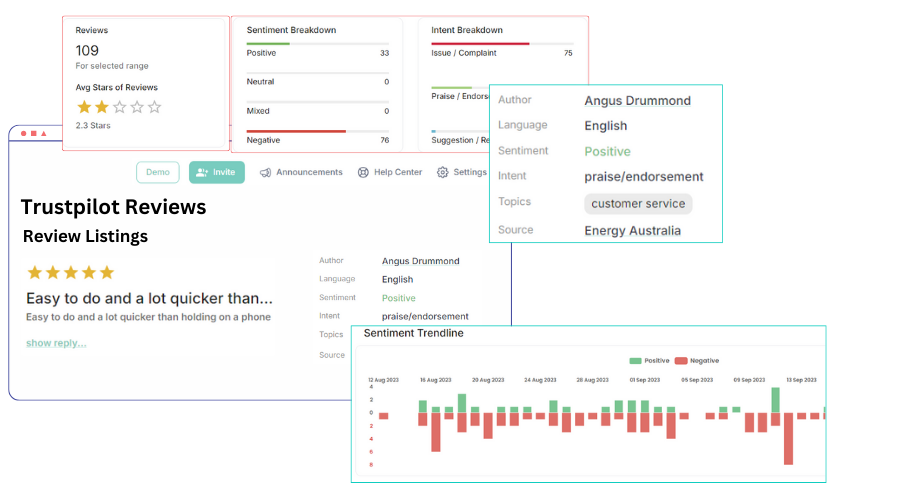

Discover the best practices for Voice of the Customer (VoC) to effectively gather, analyze, and act on customer feedback.


Customers expect more than just a product or service—they want to be heard. And if you’re not actively listening to your customers, you’re missing out on valuable insights that could take your business to the next level.
That’s where the Voice of the Customer (VoC) comes in. It’s all about gathering feedback, understanding it, and using it to make informed decisions that improve your customer experience. But here’s the thing—it’s not just about asking questions. To truly capture your customers’ voice, you need a solid strategy.
Let’s dive into some best practices that will help you gather, analyze, and act on customer feedback in a way that leads to real, positive changes.
Your customers are talking—but they’re not all using the same platform. Some are leaving reviews online, others are talking to your customer support team, and some might even be sharing their thoughts on social media.
The first step to a great VoC program is listening across all these channels. Here’s where you should keep an ear out:
By gathering insights from multiple channels, you’re more likely to see a complete picture of what your customers think and feel.
Let’s be honest: if you don’t ask for feedback, most customers won’t offer it. But here’s the trick—make it easy for them.
Create a feedback process that doesn’t feel like a chore. You can do this by:
Once you’ve collected feedback, don’t just store it in a folder and forget about it. Act on it! Your customers will appreciate seeing that you’ve taken their thoughts seriously.
Here’s how you can close the loop:
It’s not just about what your customers say—it’s how they say it. Using sentiment analysis allows you to dig deeper into the emotional tone of feedback.
Are customers generally satisfied or frustrated? Is there an underlying positive or negative trend in their comments? Sentiment analysis tools can help you track this and uncover insights you might miss with a simple review of the words alone.


Don’t keep your Voice of the Customer data locked away in a vault! Sharing customer insights with your entire team is crucial to making improvements that benefit everyone.
When your whole team is aligned with customer feedback, it’s easier to create a seamless, improved experience that benefits everyone.
Getting feedback is great, but the real value comes when you can spot trends and patterns. For example, if multiple customers are highlighting the same issue—whether it’s shipping delays or a confusing interface—that’s a sign you need to dig deeper and address that specific problem.
Here’s where you can start:
Analyzing patterns allows you to prioritize which issues need immediate attention and which ones may require longer-term improvements.
Here’s a key takeaway: Customer feedback isn’t a one-time thing. Your customers’ needs, preferences, and expectations are constantly evolving. To stay ahead, you need to make VoC a continuous process, not a once-a-year effort.
Regularly check in with your customers, ask for feedback, and—most importantly—act on it. The more consistently you gather and act on customer feedback, the more agile your business will be in adapting to changing demands.
The Voice of the Customer is one of the most valuable tools at your disposal when it comes to improving your products, services, and overall customer experience. By following these best practices—listening across channels, acting on feedback, sharing insights with your team, and making it a continuous process—you’ll not only improve customer satisfaction but also build long-lasting relationships with your customers.
Ready to elevate your customer experience? Start by listening to your customers. They’ve got plenty to say—you just need to tune in.
Don’t forget to share this post






Don’t Let Your Competitors Understand Your Customers Better Than You
Don’t miss out. Try our 30-day Free Professional Trial.

